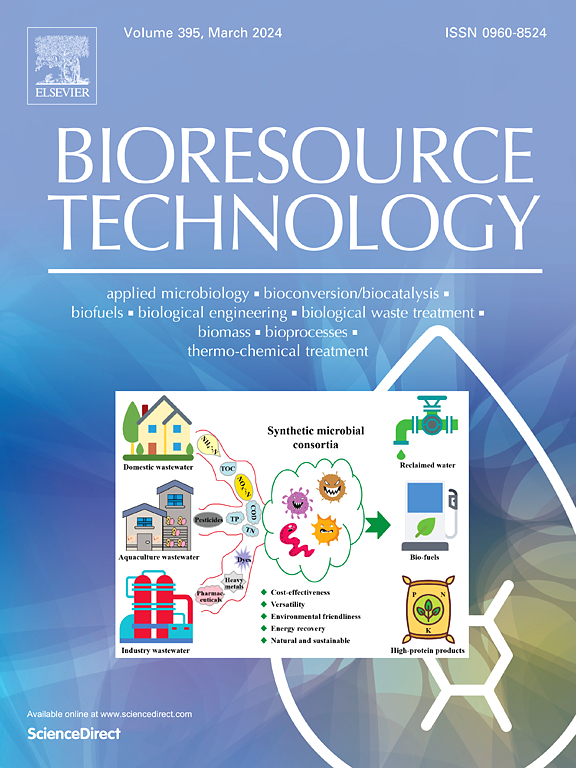Sustainable synthesis of hierarchical porous carbon from deoiled camphor leaves via cellulase hydrolysis and potassium bicarbonate activation for high-performance supercapacitors
IF 9.7
1区 环境科学与生态学
Q1 AGRICULTURAL ENGINEERING
引用次数: 0
Abstract
Hierarchical porous carbon with a three-dimensional (3D) graphene-like morphology was successfully synthesized using a sustainable approach. Camphor leaf biomass, after essential oil extraction, was employed for the first time as the raw material and co-treated with cellulase and potassium bicarbonate (KHCO3). Cellulase treatment disrupted the lignocellulosic framework, which enhanced the pore expansion and facilitated the penetration of KHCO3, leading to the development of abundant micro- and meso-porous structures. The resulting porous carbon (CE-K-PC) exhibited a high surface area (2401 m2·g−1), a large pore volume (1.43 cm3·g−1), and a relatively high mesoporous ratio (0.78). Electrochemical experiments revealed outstanding efficiency, achieving a specific capacitance of 232 F·g−1 at 1 A·g−1 in 1 M KOH. A symmetric supercapacitor assembled with two CE-K-PC electrodes demonstrated excellent stability, retaining 97.5 % of its initial capacitance following 10,000 cycles at 5 A·g−1. These findings demonstrate the potential of graphene-like biocarbon prepared using cellulase hydrolysis followed by KHCO3 activation for future sustainable energy storage applications.
纤维素酶水解和碳酸氢钾活化法制备高性能超级电容器用樟脑叶分层多孔碳。
采用可持续的方法成功合成了具有三维(3D)石墨烯样形态的分层多孔碳。首次以精油提取后的樟叶生物质为原料,采用纤维素酶和碳酸氢钾(KHCO3)共处理。纤维素酶的处理破坏了木质纤维素的骨架,增强了孔隙的扩张,促进了KHCO3的渗透,导致了丰富的微孔和介孔结构的发展。所得多孔碳(CE-K-PC)具有较高的比表面积(2401 m2·g-1)、较大的孔体积(1.43 cm3·g-1)和较高的介孔比(0.78)。电化学实验显示了优异的效率,在1 M KOH中,在1 a·g-1条件下,比电容达到232F·g-1。由两个CE-K-PC电极组装的对称超级电容器表现出优异的稳定性,在5 A·g-1下进行10,000次循环后,其初始电容保持97.5 %。这些发现表明,通过纤维素酶水解和KHCO3活化制备的类石墨烯生物碳具有未来可持续储能应用的潜力。
本文章由计算机程序翻译,如有差异,请以英文原文为准。
求助全文
约1分钟内获得全文
求助全文
来源期刊

Bioresource Technology
工程技术-能源与燃料
CiteScore
20.80
自引率
19.30%
发文量
2013
审稿时长
12 days
期刊介绍:
Bioresource Technology publishes original articles, review articles, case studies, and short communications covering the fundamentals, applications, and management of bioresource technology. The journal seeks to advance and disseminate knowledge across various areas related to biomass, biological waste treatment, bioenergy, biotransformations, bioresource systems analysis, and associated conversion or production technologies.
Topics include:
• Biofuels: liquid and gaseous biofuels production, modeling and economics
• Bioprocesses and bioproducts: biocatalysis and fermentations
• Biomass and feedstocks utilization: bioconversion of agro-industrial residues
• Environmental protection: biological waste treatment
• Thermochemical conversion of biomass: combustion, pyrolysis, gasification, catalysis.
 求助内容:
求助内容: 应助结果提醒方式:
应助结果提醒方式:


